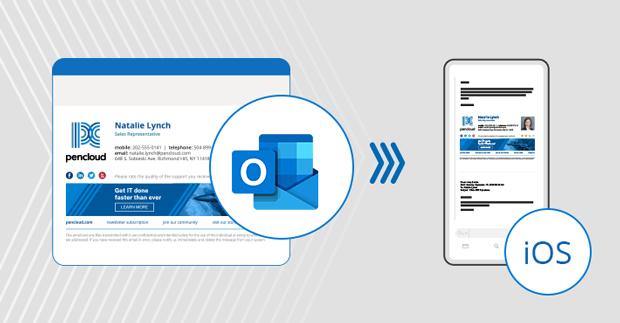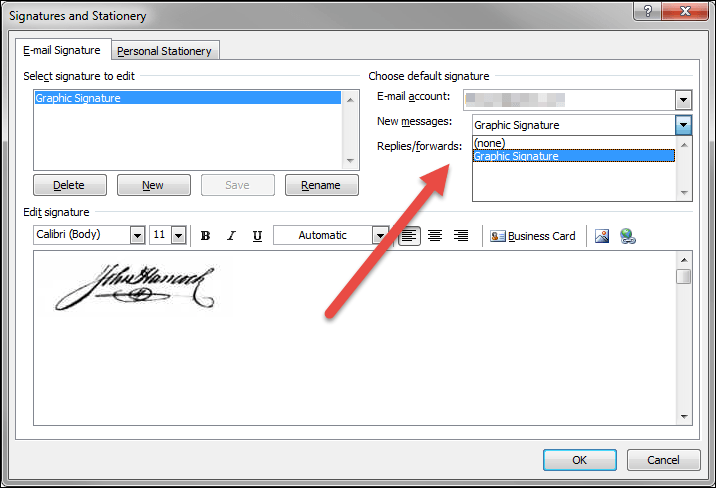

- #How to insert picture into outlook email signature how to#
- #How to insert picture into outlook email signature professional#
If you want to add a link to the uploaded image, you will want to click the image, and then hit the chain icon to add a hyperlink to a website. Once the image is added you can click on the image to edit it and drag the corners of it to resize it.

Find it among your files and click Insert. It will ask you what image on your computer you would like to include in your signature. In the formatting menu above the signature click on the icon of a photo of mountains with a small computer in front of it, this is the Insert Picture button. Within the Insert menu you can now click on Signature and then Signatures.Ĭhoose the Signature you want to edit and add a line or click inside the signature to choose where you want the image to be added With the blank email message open, choose Insert. Open the Outlook application on your desktop, choose New Email.
#How to insert picture into outlook email signature how to#
Here is a step by step process of how to add an image into your email signature in the Desktop version of Outlook:
#How to insert picture into outlook email signature professional#
If you are looking for a more robust tool that can help you create a beautiful email signature that can make you and your organization look more professional then I would recommend you check out the editor and pre-made templates on Signature.email. The default Outlook signature editor can be frustrating to create anything but the simplest of email signatures. If you are looking for instructions on how to add a picture like a photo or a logo to your email signature then we have a step by step guide for you on how to accomplish that. ObjMsg.HTMLBody = Replace(objMsg.HTMLBody, strAtt, "cid:" & EmbAtt.Outlook (for desktop) provides a basic interface where you can create and edit a simple email signature for yourself. If InStr(1, objMsg.HTMLBody, strAtt, vbTextCompare) > 0 Then Attachments.Add(strSigFilePath & Replace(strAtt, "/", "\"))
HTMLBody = "Something here.
" & strBufferSplitAtt = Split(strBuffer, "src=""",, vbTextCompare) Set objSignatureFile = objFSO.OpenTextFile(strSigFilePath & "Oliv.htm") StrSigFilePath = enviro & "\Microsoft\Signatures\" Public Sub CreateMessageSignatureWithImage()ĭim enviro, objFSO, strSigFilePath, objSignatureFileĭim strAtt, SplitAtt, EmbAtt As Attachment It is useful if the signature contains images.

The behavior is different if we run the macro from Excel, in this case we can just use DoDefaultAction, but not when we run it from OUTLOOK !

Sample macros that insert stationary files into new messages are atĬreate a New Message using an HTML File or Stationeryįirst: You will need macro security set to low during testing. Myreply.HTMLBody = " " & strBuffer & myreply.HTMLBody Set oBookmark = olDocument.Bookmarks("_MailAutoSig") You will need to set a reference to the Microsoft Word Object Library in Tools, References. You will be able to insert another signature manually. After using this macro, the signature bookmark is removed and you will not be able to change the signature automatically. This macro removes the default signature and adds a new one. If you are creating a new message or not keeping the message body, you can insert an HTML signature directly into. If, like PowerUser states, the signature is wiped out while editing HTMLBody you might consider storing the contents of ObjMail.HTMLBody into variable strTemp immediately after ObjMail. If you need to change a signature in a reply, you will need to remove the signature that was added automatically and insert a new one. My solution is to display an empty message first (with default signature) and insert the intended strHTMLBody into the existing HTMLBody. Set objMsg = Application.CreateItem(olMailItem) Set objSignatureFile = objFSO.OpenTextFile(strSigFilePath & "My Sig.htm") ' Edit the signature file name on the following line Set objFSO = CreateObject("Scripting.FileSystemObject")


 0 kommentar(er)
0 kommentar(er)
